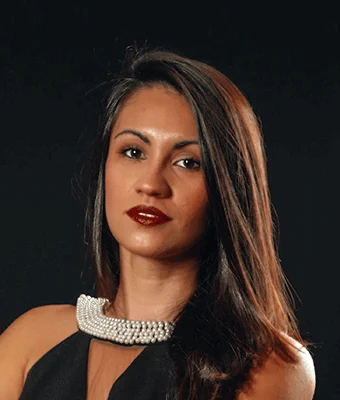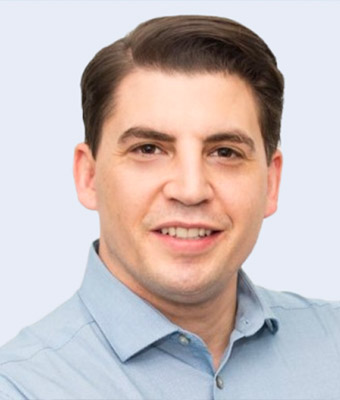By AgDev

“Six Tickets for the Tree Museum Please”
If you are reading this document it is likely that you are either interested in the environment or a climate-oriented investor. If, like me, you live in Europe and have young kids, you may get asked by your kids (at least I do) about whether your generation is being responsible so younger generations have a clean and healthy planet. A constant topic of my almost eight-year-old. So much so that recently I had a dream that our generation failed her. In my dream, I extrapolated what “failure” would look like in regards to deforestation. Meaning that all the efforts to stop deforestation in Brazil, my sandbox, had failed. In fact, the last native tree was cut down in some part of Tocantins, Brazil. It was a sad day. My kids and I (I have four children under seven, don’t ask how this happened, still in shock) are in line at the Tree Museum in São Paulo a block away from Ibirapuera.
Nightmare Next to Parque Ibirapuera – How Close to Reality?
So this is absurd. There are laws to prevent this. However, the numbers of deforestation are startling. It is not a game.
Ok, so some numbers to explain what’s going on to help better understand how we got here. Brazil is the number one agricultural export nation and it unfortunately also leads the ranks in worldwide deforestation. Close to half of all tropical primary loss in the world since 2002 took place in Brazil, approximately 60% of the Amazon is in Brazilian territory.
This is a ranking by the World Resources Institute which lists the total amount of humid primary forest available by country and the deforestation that took place from 2002 through 2022. According to the institute, tropical humid forests are particularly difficult to recover. In Malaysia and Indonesia alone 95% of the deforestation that took place is considered to be permanent. The primary forest loss stems from both deforestation, like clearing forests for pastures or agriculture, and other forms of degradation, such as understory forest fires. What’s alarming is that even forest degradation can have far-reaching consequences, given the extensive time required for primary forests to recover, decades or even centuries.
Brazil Trends
Brazil is no different than the rest of the countries leading the deforestation rank in that the main drivers are linked to the opening of cropland and cattle pastures. A noticeable dip in deforestation took place between 2005 and 2015 mainly because of increased law enforcement, real-time monitoring, and supply-chain interventions. Unfortunately, due to forest fires in the Amazon during 2016 and 2017, the total forest loss grew and is continuing to trend upwards.
The Economics of Deforestation: Profitability of Raw Land and Rational but Undesired Behavior
Raw undeveloped land has very little economic value to landlords, it is only natural for them to want to use it for some sort of economic benefit. Thanks to the advent of the Voluntary Carbon Markets, landowners can now sell future carbon credits and profit from their native forests by preserving them. This is still a relatively new market and the concept hasn’t fully caught on, so it is expected for landowners to gravitate toward more traditional land use through agriculture.
There is a strong push by government and private agencies for landowners to develop and use their land while preserving as much native vegetation as possible by employing agroforestry, integrated land management, agricultural tourism among other sustainable uses of the land. Although the economic benefits of harvesting nuts like cashews and baru nuts has been proven it is hard to break old habits and many revert back to traditional crop agriculture.
The difference between undeveloped and productive land grows along with the increase in commodity pricing. A hectare of virgin forest in the Cerrado can retail for as little as U$ 1,000, while prime productive land can fetch the seller up to U$ 11,000 per hectare. Few investments generate these kinds of returns, and even though the process of opening native forests, correcting and treating the soil, planting, harvesting and trading the crops is an arduous task the economic incentives are real and proven. It is difficult to blame anyone for being fiscally responsible by wanting to maximize their investment.
| Virgin Forest | Degraded Land | Prime Land | Median Land | |
| Land Cost Tillable Hectare | $1,000-2500 | $3,000 – 4,000 | $10,000-11,000 | $7,000 |
| Conversion costTillable Hectare | $2,000-4,000 | $1,500-2,500 | $0 | $0 |
| Total Cost Tillable Hectare | $3,000-6,500 | $4,500-6,500 | $10,000-11,000 | $7,000 |
| Conversion Time (years) | 2+ years | 1 year | Ready | Ready |
Demand for land
The prices of agricultural lands dedicated to grain cultivation in Brazil witnessed a significant surge of around 45% in 2022. This increase was driven by a strong demand from investors in the market and the high returns from agriculture, despite the high costs involved. According to the latest report by S&P Commodity Insights, the average value per productive agricultural hectare rose from R$ 36.7k to R$ 53.3k between 2021 and 2022.
The S&P Global report further reveals regional variations in land prices, with the average price per hectare ranging from R$ 26.7 thousand in the Central-West region to R$ 212 thousand in the South, the most consolidated and highly valued area. Amid uncertainties surrounding fiscal policies and international market conditions, the agricultural market faces potential impacts on production costs and land prices.
Animal Feed
As the global demand for meat and other livestock products increases, so does the demand for their feed. Two of the main ingredients making up animal feed are corn at 50.3% and soybeans 12.7% of the total composition. Meeting this demand entails increasing corn and soy production which further stresses the current stocks, further increasing prices, and creates even more incentives to open fields and turn them productive at whatever environmental price.
Expanding production to new frontiers means expanding infrastructure. New fields and farms require not only roads, but also crushing facilities, silos, housing, waste treatment, power supply, and communication network expansion to mention a few of the minimum needs. Farming operations tend to attract progress which may translate into further deforestation. In other words, as a region or area begins to open up to farming operations, infrastructure is built out, which can attract newcomers to the area that seek to implement their own farming operations.
Animal Protein
The past 50 years have witnessed a significant expansion of the global middle class, shifting away from its traditional concentration in western nations. Today, the middle class is increasingly dispersed across less developed countries, reflecting the changing economic landscape. As more people ascend to the middle-income bracket, their dietary preferences and consumption patterns undergo transformation as well.
In first-world countries, the demand for animal protein is expected to stabilize, reaching a point of saturation as dietary habits evolve and alternative food options gain popularity. However, the situation is quite different in emerging and developing markets. In these regions, the appetite for animal protein is projected to surge steadily over the next decade, with an annual growth rate of 3%. This rise can be attributed to a combination of factors, including economic growth, urbanization, and cultural shifts.
Among the prominent contributors to the rising demand for animal protein are India and China, home to a staggering 36% of the global population. As these nations experience increasing prosperity and undergo cultural transformations, the younger generations, in particular, are adopting animal protein-based diets more frequently. This shift in dietary habits, influenced by changing lifestyles and greater exposure to diverse food choices, underscores the significant impact of middle-class expansion on the demand for animal protein worldwide.
How Did We Get Here or Man Must Eat
Global demand growth for food
According to estimates compiled by the Food and Agriculture Organization of the United Nations (FAO), by 2050 we will need to produce 60% more food to feed a world population of 9.3 billion. Three factors contribute to this demand: global population growth, growth of the global middle class and subsequent shifts in demand for higher nutritional value foods, and alleviation of global poverty and hunger.
Global Productive Land
As the global population continues to grow, with the number of people in the world more than doubling between 1961 and 2016, there is greater demand for food. And pressure on land, which is a limited resource, has also increased. According to FAO, the global area of farmland per capita has steadily declined over the period between 1961 and 2016: from around 0.45 hectares per capita in 1961 to 0.21 hectares per capita in 2016. According to data compiled from national governments by FAO, on average over the past decade, China was the country with the largest expanse of agricultural land (about 500 million hectares or Mha), followed by the United States, Australia (about 400 Mha each) and Brazil (278 Mha). India had the largest cultivated area (almost 170 Mha), followed by the United States (158 Mha), China and the Russian Federation (about 120 Mha each) and Brazil (about 90 Mha).
Food Production in Brazil
(Source: WTO data via The Observatory of Economic Complexity (OEC); Rankings are based on trade value, not trade volume, and all values are in US$.)
A 2021 Embrapa study based on basic human food needs found that in 2020 Brazil’s main food exports –grains and beef – fed a total of 778,600,000 people worldwide (212,235,000 Brazilians and 566,365,000 from other countries, or about 10% of the world’s population).
Brazil is the world’s fourth largest producer of grains (rice, barley, soybeans, corn and wheat), behind the United States, China and India, with 7.8% of world production. In 2020, it produced 239 million tons and exported 123 million tons. Brazil is the second largest grain exporter, with 19% of the international market. Brazilian grain exports in 2020 totaled US$ 37 billion and between 2000 and 2020 totaled US$ 419 billion.
From 2000 to 2020, the country was the second largest producer and exporter of soy. In 2020, it was the largest producer and exporter, producing 126 million tons and exporting 84 million tons. Brazil now accounts for 50% of the global soy trade. Brazilian soy exports totaled US$30 billion in 2020 and US$346 billion between 2000 and 2020.
From 2000 to 2020, the country was the third largest producer and exporter of corn. In 2020, it produced 100 million tons and exported 38 million tons, or 19.8% of global exports and was the second largest exporter, with exports valued at US$6 billion. From 2000 to 2020, total corn exports were valued at $64 billion.
From 2000 to 2020, Brazil was the fifth largest cotton producer, and in 2020 it was the fourth largest, producing 5.3 million tons (7.2% of world production). In 2020, Brazil exported 1.3 million tons (12.4% of global exports) valued at US$ 2 billion and was the second largest exporter in the world. The total value of exports from 2000 to 2020 was US$24 billion.
Brazil ranks third worldwide in the international livestock market (beef, poultry and pork), with production in 2020 corresponding to 9.2%, or 29 million tons, behind China and the United States.
Regarding exported meat (beef, pork and poultry), in 2020, Brazil was in second place, with 7.4 million tons or 13.4% of the world total. Between 2000 and 2020, Brazilian meat exports totaled US$ 265 billion and it was the second largest exporter in the world. In 2020, Brazil had the largest cattle herd in the world, representing 14.3% of the global herd, with 217 million head, and in 2020 the country was the world’s largest exporter, with 2.2 million tons and 14.4 % of the international market, valued at $7 billion. Brazil has the fourth largest flock of birds in the world, with 5.6% of the total in 2020, or 1.5 billion head. In 2020, Brazil became the largest exporter of chicken meat with 4.3 million tons (20.9%), valued at US$ 6.6 billion. In 2020, Brazil ranked third in the world in pork production, with 41 million head, or 4.4% of the total. With regard to pork exports, Brazil ranked 7th in 2020 and 8th in the last two decades, with a share below 5%.
Brazil is the world’s largest producer and exporter of coffee and sugar. In 2020, Brazil produced 3.1 million tons of coffee and 766 million tons of sugar, corresponding to 30.3% of world coffee production and 33.9% of sugar. Brazil exported 2 million tons of coffee (25.5% of total exports) valued at US$4.1 billion and exported 22 million tons of sugar (30.3% of exports) valued at US$5.8 billion. From 2000 to 2020, Brazil was also the largest producer and exporter of both, with a total value of coffee exports at US$94 billion and sugar at US$174 billion. In 2020, Brazil was the fourth largest producer of forest products (5.2% of global production). It was also the second largest exporter of forest products (56 million tons valued at $31 billion). From 2000 to 2010, it was the sixth largest exporter, with total exports valued at US$504 billion.
Productivity Gains
Until the 1970s, the Cerrado was classified by Embrapa as an area not suitable for planting grains. Since the 1980s, with the creation of new seeds and technologies, the Cerrado has become the focus of agricultural expansion in the country. Since 1975, land destined for agricultural production has grown by 137%, while the production of grains produced on these lands has grown by 982%. In 1996, the expansion of land as a factor of production represented 18% of the growth, while in 2006 it represented only 9.6%. Technological growth is the main driver for higher yields and productivity per hectare.
Deforestation and Climate Impact
According to NASA, the consensus among the scientific community points toward climate change being real and that human activities are extremely likely to have caused climate warming trends over the past century. One of the most damaging of these activities is deforestation which is responsible for 12-20% of global greenhouse gas emissions. The destruction of forest ecosystems disrupts the carbon cycle, as trees play a crucial role in absorbing CO2 through photosynthesis and storing it in their biomass. Deforestation not only contributes to the depletion of this valuable carbon sink but also releases stored carbon when trees are burned or decay. When a forest is cleared it is not just robbed of all the carbon it could have stored, but it releases all the carbon captured along its entire life back into the atmosphere. Humanity shooting itself in both with one bullet.
2 Gt of CO2 Released in Brazil due to loss of 3.23Mha Natural Forest
Deforestastion’s Impact on Climate Change
The release of carbon dioxide into the atmosphere accelerates the effects of climate change, which according to a series of UN reports compiling the work of thousands of scientists and government reviewers agree that the global temperature rise must be limited to no more than 1.5°C to maintain a livable climate. Many reports point to a likely rise in 2.8°C by the end of the century. The seven biggest emitters alone (Brazil, China, the United States of America, India, the European Union, Indonesia, and the Russian Federation) accounted for about half of all global greenhouse gas emissions in 2020.
Deforestation, whether intentional or accidental, results in the inevitable release of carbon into the atmosphere in the form of carbon dioxide. Trees naturally capture carbon during photosynthesis, sequestering the element in great amounts in its leaves, branches and roots. According to Pachamama a single mature sycamore can store 1 tonne of carbon dioxide. Accelerated deforestation has made it that some tropical rainforests become carbon sources when they were previously carbon sinks. According to scientists from the World Meteorological Organization the south-eastern part of the Amazon Rainforest is now widely considered to release more carbon than it captures officially making it a carbon source.
Deforestation’s connection to Global Greenhouse Gas Emissions and Biodiversity Loss
In recent decades, the majority of species losses have been concentrated in low- and middle-income countries, particularly in Latin America. Earth’s biodiversity is facing an unprecedented crisis, with species disappearing at the most alarming rate in human history. Globally, it is estimated that at least 1.2 million plant and animal species are under the threat of extinction, and many of them may vanish before the year 2100. The current pace of species disappearance is 10 to 1,000 times faster than the natural background rate of extinction depending on the specific ecosystem and current climatic impacts, indicating that we are experiencing the onset of the ‘sixth mass extinction event,’ primarily driven by human activities.
The main driver of biodiversity loss is the loss, degradation, and fragmentation of habitats. This issue is primarily caused by the increasing expansion of industrial activities and agriculture, fueled by the demand for high-consumption lifestyles in affluent countries and the rising consumption patterns in low- and middle-income nations. As an example, deforestation in the Amazon Rainforest, the world’s largest and most biodiverse rainforest, is pushing it towards a critical tipping point. Beyond this tipping point, vast portions of the forest are expected to transform into dry, degraded savannahs, resulting in severe losses in biodiversity, carbon release, and the overall well-being of human communities that rely on the forest’s vital ecosystem functions.
Over the past 22 years, forests in all climate domains (tropical, subtropical, temperate, boreal) have shown a remarkable ability to surpass emissions caused by forest disturbances. Among these domains, tropical forests exhibited both the highest average annual gross emissions and gross removals, reaching an average of 5.6 Gt CO2e per year for emissions and an average of -7.0 Gt CO2e per year for removals. Despite their significant carbon dioxide removal capacity, tropical forests faced an even greater challenge, as their average annual gross emissions resulting from disturbances were over 1.5 times higher than those of temperate, subtropical, and boreal forests combined.
As a consequence, tropical forests accounted for only 20 percent of the global net forest sink, while temperate forests took the lead with 57 percent of the global net forest sink. The temperate forests displayed an impressive average annual net sink of -4.3 Gt CO2e per year, equivalent to roughly 80 percent of the United States’ annual GHG emissions from energy. In addition to possessing the largest total net sink, temperate forests also boasted the highest net sink per hectare, averaging -7.3 tonnes CO2e per hectare per year. In contrast, tropical forests exhibited the smallest net sink per hectare, with an average of -0.73 tonnes CO2e per hectare per year due to deforestation.
Formation of Degraded Pasture
Traditionally when a farmer was looking to expand, they did so by finding the cheapest land possible. In the past, particularly before 2020, farmers often would clear virgin forests through large-scale clearing methods to make way for their fields. Before new legislation was enacted, there were few methods of stopping this pattern. Based on current laws and government oversight, aggressive deforestation is illegal. Farmers are still entitled to clear native vegetation in the Cerrado as long as they maintain 20% of legal reserves.
Land that had been previously cleared for grazing and is often still used for that purpose is usually a middle ground between productive land and virgin forests. Often this land was either used as grazing for cattle temporarily and the farmer moved on or a farmer attempted to clear the land and make it productive but was unable to do so due to lack of capital. This degraded pasture is not as inexpensive as native vegetation-covered land and not as expensive as fields prepared and ready for planting. It also does not take as long to prepare for planting as a virgin forest.
Expansion in the future
According to projections by Embrapa and the Ministry of Agriculture, productivity will continue to be the main factor driving grain production growth over the next ten years. This can be observed when comparing the projection data of production and planted area – agricultural production area is expected to increase 26.9% and planted area 16.7% through 2030. The projections also indicate a trend towards a reduction in the pasture area in the coming years. Three trends are observed when analyzing productivity data: reduction of employed labor; reduction of planted area due to land productivity gains; increased use of capital. This trend can also be observed in the information from the ERS-USDA (2020) (United States Department of Agriculture).
How can Brazil help solve the growing global demand for food while reducing deforestation?
Continue to increase productivity through new technologies and efficiencies, while emphasizing expansion into already open underproductive land (such as degraded pasture) to reduce pressures on further deforestation. According to data from MapBiomas (the most up-to-date data from Embrapa), in Brazil the total pasture area is 159 million hectares, of which 66 million are in a state of intermediate degradation and 35 million in a situation of severe degradation. That is, of the total pasture area in the country, 63.5% are showing signs of degradation.
Fortunately and impressively, most of this growth is driven by productivity improvements. Soy production per hectare has grown from 21,632 (36 sacks) hg/ha to 34,450 (57 sacks) hg/ha since 1994. Soy prices have risen from U$ 2.50/bushel in the early 70’s to U$ 15-17+ in recent years.
The increase in soy prices and in productivity have created the perfect incentives for rural landowners to turn their land productive, regardless of what kind of vegetation and ecosystems sit on top of said land. Permits to clear land are not necessarily impossible to obtain, they tend to take between one and two years as they vary greatly between jurisdictions, although not prohibitively expensive the returns make the investment in time and capital worth it. Brazilian law allows clearing of 20-80% of the land while maintaining the remaining as legal reserves.
Permits and enforcement are carried out by government environmental agencies, they are usually effective. At times these agencies can be underfunded and are less able to expedite permits, monitor, enforce, and prosecute offenders. This creates a perfect scenario for bad actors to slash and burn native forests making way for grazing pastures or crop fields and get away unpunished.
Our Approach
Degraded pastures are at the center of our thesis. They are underutilized swaths of land that, with the right incentives, can help deter farmers from using virgin forests and turning them into fields. We now know that by employing some sustainable techniques by planting and harvesting on these parcels, they can actually sequester more carbon, trap more humidity, help feed the world, and increase profit margins for farmers, than if left alone to further decay. Food and water shortages are a reality and this can be a major piece to the puzzle toward a solution.
AgDev believes that by acquiring this degraded pasture and by applying sustainable practices this soil can be turned into fertile and highly productive land. AgDev via Carroll Family Farms is knowledgeable and already employs some techniques in their current farms, including crop rotation, cover crops, and no-till farming. The opportunity to acquire land in these conditions at these prices and with long-term financing will have a positive impact on other farmers in the region. There are more pastures in the area which will attract other farmers to seek out investment opportunities similar to this one.
Not only does our program seek to reduce deforestation, but it also seeks to improve agricultural practices to become more sustainable, as well. In doing so, soil health is improved, water quality is managed, and farmers are able to do more with their land. These activities and through focusing on degraded pasture can also help to reduce the carbon footprint of agriculture in the Cerrado region.
AgDev provides a unique platform for investors interested in sustainable agriculture production and a unique solution for the expansion-minded farmer. Why? To management’s knowledge, we are the only organization focused on the degraded pasture acquisition strategy that combines “boots and suits.” What does this mean?
We believe that to fully execute this strategy properly one needs to actually have a true inherent and real knowledge of farming practices in one’s DNA and also be very connected to the capital markets and investors. AgDev, as a Carroll Group company, is literally on the farm with 15,000 hectares under management. We understand and live on the farm. Our strategic partnership with Prada Assessoria, a large investment firm with a significant track record in credit investments in Brazil, provides a unique perspective that aligns with institutional investors. We understand investors and have a large office in the financial district of São Paulo and are in constant contact with investors in the USA and Europe as well. AgDev is the result of this combination of Carroll and Prada.
AgDev works with Prada and the Carroll organization to put all the pieces together. Specifically, AgDev is responsible for managing the day-to-day execution of raising capital, originating farmers, and managing the services that we leverage from the Carroll organization.
For both farmers and investors, we seek to be a “turnkey” solution meeting all of their needs. For example, for farmers, not only do we provide access to capital, but also the potential for land and farm management solutions, environmental consultancy for improving and ongoing monitoring of sustainable farming practices, and even farmland real estate services that can help identify and manage the purchase of new degraded pasturelands.
For investors, not only do we provide a sustainability-oriented investment opportunity in the world’s largest agricultural producing country with real, positive environmental impacts, but we also do so with significant international investing experience which allows us to make these investments dollar-based, eliminating currency risk.













